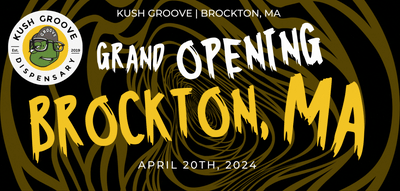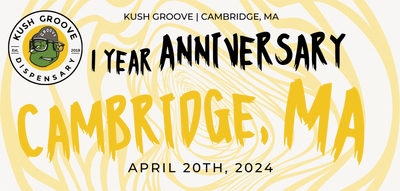Hash is made by compressing and processing the trichomes of the cannabis plant, this is Hashish or Hash. You can consume it either by smoking from a pipe or a joint. Sometimes you can even orally ingest it.
It is used in Afghanistan, Morocco, Iran, Pakistan, and India. It has a long history of usage among those Eastern countries. However, it is also popular in Europe. After all, Hashish is the most common form of cannabis use there.
It has multiple street names as well, which are: boom, gangster, and hemp. Although, these street names may differ across regions in the US and may change often.
Considering its many names and its widespread use across the world, it is only natural to want to know what it is exactly and where it came from. Let’s go over its history to find out.
What is Hash?
Hashish has many names. It can also be spelled as hasheesh, from the Arabic ḥashīsh meaning dried herb. In Arabic-speaking countries, this term refers to the preparation done on the parts of the cannabis plant.
Its earliest recorded name is Ma, a Chinese name for hemp. It was used in medical settings. On the other hand, Hemp is its English name counterpart. One of the oldest and most commonly used names for it is ganja. In the commercial scene, cannabis strains have more than 2,300 names.
However, its botanical name is Cannabis sativa or Cannabis indica. It is a potent form of cannabis born from the most potent material of cannabis plants, which are called trichomes. Trichomes are appendages or fine growths that produce a sticky resin.
Its active ingredient is tetrahydrocannabinol (THC). Hash normally has 10 to 15 percent of THC. Hashish has the same active ingredients found in marijuana, only stronger. It is usually smoked in a pipe or a bong (water pipe). It can be “dabbed” using a vaporizer pen.
It can also be rolled in a blunt with tobacco or marijuana. If you want to consume it in a more sophisticated way, you can add it to your tea and drink it with your pinky up. Using it with a vaporizer makes it easy to hide because it is smokeless or odorless. This makes it easier for abusers to further abuse them, however.
Hashish use may lead to problems with memory and learning. It can also lead to a distorted perception of the sense of sights, sounds, time, and touch. The short-term effect of hashish may also lead to difficulty in problem-solving and thinking; loss of coordination, and increased heart rate.
The intensity of these problems depends on the concentration of THC. The higher the concentration of THC, the more intense these effects would be. This drug also has high abuse potential. This is alarming because nearly 4% of 12th graders use vape THC regularly.
However, we cannot deny that it is also now being used medically.

Where Did It Come From?
The process of making hashish doesn’t involve the use of chemical additives. It is always natural. Moreover, the properties of the hash like the strength and the smell are directly related to the plant’s genetics. Hashish has a long history and some methods of procuring it even go back to thousands of years ago.
It goes back to 1123 CE wherein the term “hashish” was published in a pamphlet in Cairo. It was used as a form of accusation towards Nizari Muslims, calling them “hashish-eaters”. In the 13th-century, the use of hashish was prohibited by Ibn Taymiyyah because it was introduced to them with the Mongol invasion.
Until the 1500s, it was consumed orally by the Muslims and was only smoked after the introduction of tobacco. In 1596, Jan Huyghen van Linschoten mentioned Egyptian hashish. According to his work, Egyptians consume Assis (Hashish) in fives and as big as chestnuts (or sometimes larger). It was commonly consumed by the masses because it wasn’t expensive.
In the late 17th century, hashish became a major trade item between Central and South Asia. Hashish was introduced to Europe during the 18th century. In 1856, there existed British tax ganja and charas trade in India.

Medical History
As mentioned earlier, hash has a medical history as much as a recreational one. It was used as an anesthetic in Germany in 1869. Its peak of medical use was between 1880 and 1900 where it was common in almost all European countries and the USA wherein it played roles in the treatment of pain, dysmenorrhea, and asthma. It is also used to relieve arthritis and rheumatism.
It was also once used as a treatment for depression. Although, its use in medical settings was prohibited worldwide because of the 1961 UN Single Convention on Narcotic Drugs. It has been legalized in many countries though, namely South Africa, Uruguay, and Canada.
In Canada, regulated medical cannabis became legal on July 30, 2001. Its recreational use was also decriminalized. The production and sale of edible hash in Canada were legalized due to the Cannabis Act. Moreover, you can own as much as 30g in public (if you’re an adult) because of the Cannabis Act.
Benefits of Hash
Hashish is highly sought after in most of the world and its quality only gets better. Manufacturers continuously improve the resin quality of their hashish with higher ratios of THC. They also made them tastier, smoother, and more aromatic.
There are many questions regarding the usage of hashish or just cannabis in general. It has been shown to have medical benefits, especially regarding chronic pain. It is also safer than opiates in this regard, hence its appeal. It is a great muscle relaxant which is great news to people who suffer from Parkinson’s disease.
Despite these benefits, whether medical or recreational, it should still be used in moderation. Moreover, it should be regulated in a way that teenagers do not abuse it or are not able to access it. This can be done through proper education, of course, and providing them with an environment that would not urge them to turn to drugs.
With proper guidance and thorough research, hashish may well just be the “wonder drug” its marijuana counterpart is known as. It will be interesting how much it will continue to contribute to society.






